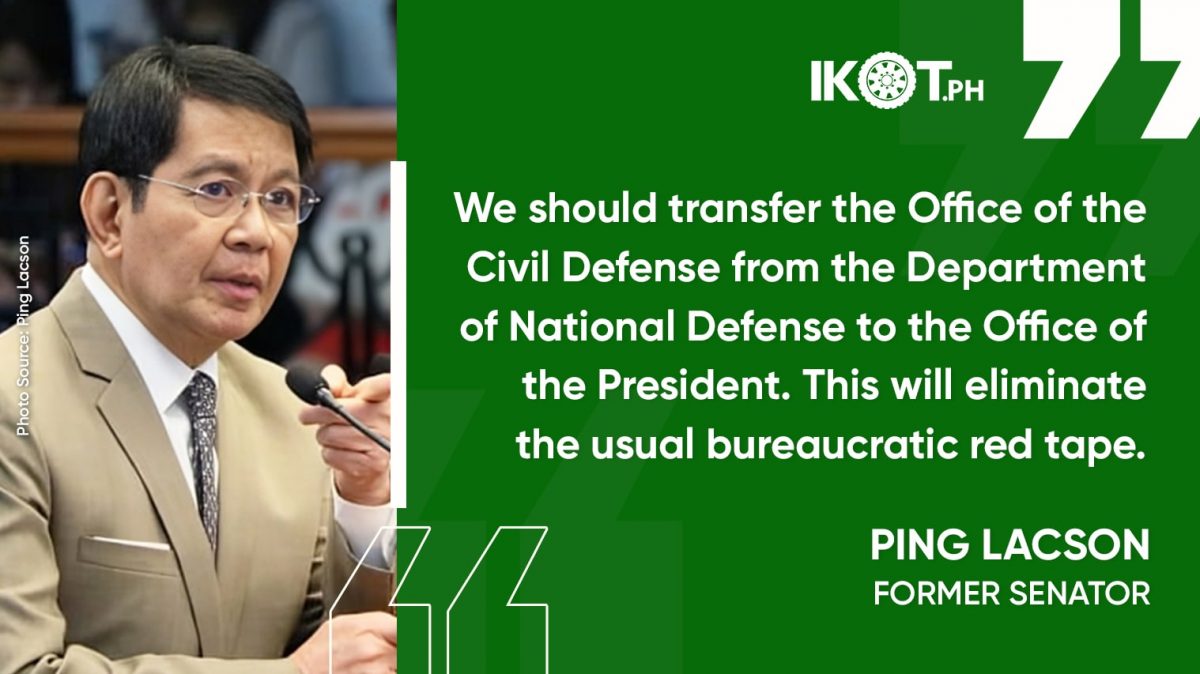Former senator and 2025 senatorial candidate Ping Lacson pushed for a streamlined disaster response mechanism, an updated Building Code, and a national hazard mapping program to help us cope with the effects of earthquakes, floods, cyclones and other disasters.
Lacson, who also served as Presidential Assistant for Rehabilitation and Recovery, proposed to transfer the Office of Civil Defense (OCD) directly under the Office of the President.
“We should transfer the OCD from the Department of National Defense to the Office of the President. This will eliminate the usual bureaucratic red tape,” he said in Filipino at the “Konsultahang Bayan: A Caucus for Good Governance Beyond Elections” held at the Citylight Hotel in Baguio City.
The forum was attended by Baguio City Mayor Benjamin Magalong along with experts and representatives from various sectors seeking good governance.
Lacson said the OCD, once under the OP, would be in a better position to coordinate effectively with all departments and agencies since it is under the President’s direct control.
“The President has a direct alter-ego in this setup.”
“The President has a direct alter-ego in this setup,” he said.
Lacson recalled that when he served as PARR to coordinate post-Yolanda recovery efforts, he struggled with limited authority – similar to the OCD’s current plight of lacking sufficient authority and access to executive channels.
On the other hand, Lacson stressed the need for a revised National Building Code that will protect the public from the effects of natural and man-made disasters by setting standards for the safety of structures.
He noted he had filed Senate Bill 1239 in December 2019 seeking to update the 1977 National Building Code, but it did not get enough support in the Senate.
“The Building Code is important in disaster resilience. Without it, we do not have a ‘bible’ to follow in terms of safety standards.”
“The Building Code is important in disaster resilience. Without it, we do not have a ‘bible’ to follow in terms of safety standards,” Lacson explained.
He said the building code could also extend to preserving Filipino architecture in selected areas like the Chinatown district and Vigan, Ilocos Sur, to name a few – similar to the way some European countries preserve the building’s facade while modernizing its internal structure.
Also, Lacson pushed for a national hazard mapping program to identify disaster-prone areas.
“This should be science-based so highly hazardous areas could be avoided for building structures or at least strengthen structure resilience to meet the standards under an updated building code,” he concluded.



